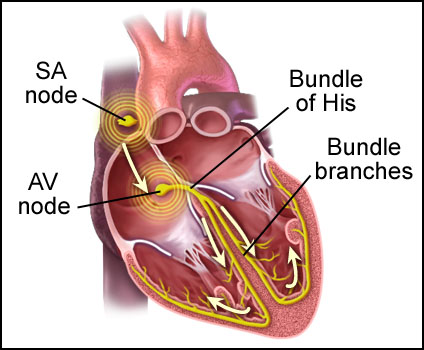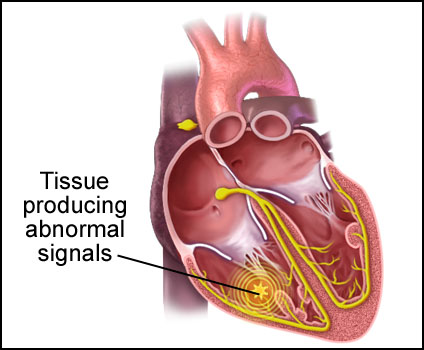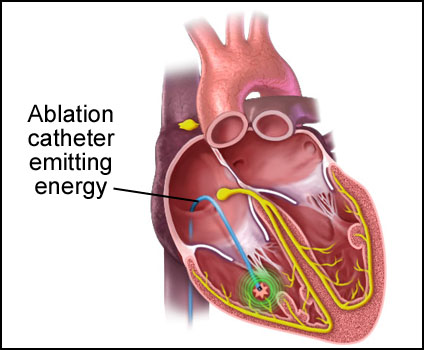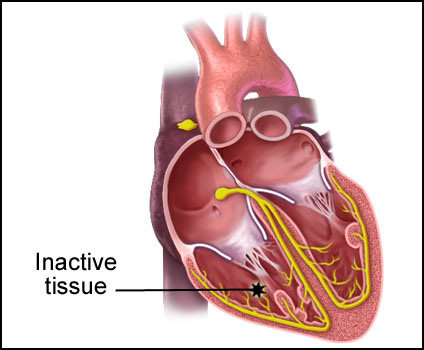
Ventricular Tachycardia Ablation
Ventricular tachycardia ablation is a procedure used to correct ventricular tachycardia by destroying the tissue that creates the abnormal electrical signals. Ventricular tachycardia is an arrhythmia that is caused by abnormal signal that originate in the lower chambers of the heart (ventricles).
The electrical system of the heart controls each heartbeat. Electrical impulses generated by special tissue (nodes) travel set pathways through the heart causing the muscle to contract, or “beat”. When abnormal electrical signals interfere with the normal flow of impulses, an irregular heartbeat occurs. These irregular heartbeats are called arrhythmias.
To perform this procedure, a catheter is threaded into the heart and the tip is guided to the abnormal tissue in the ventricle. The catheter then emits a pulse of high-energy electricity that destroys the tissue producing the abnormal signals. A normal heartbeat is then restored.
Visit Medmovie.com Website for more information.



